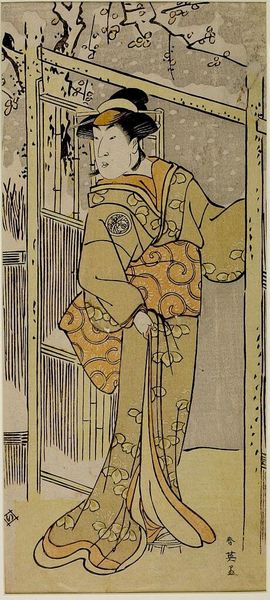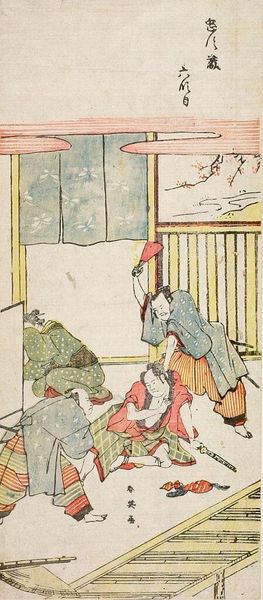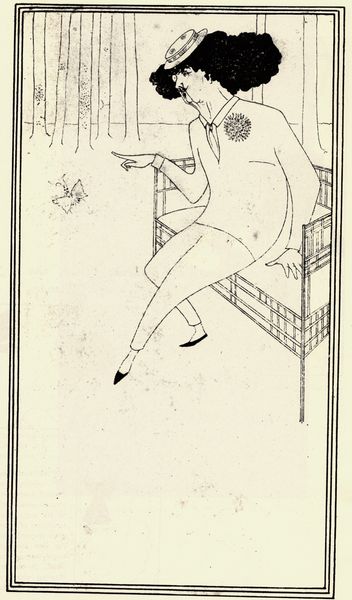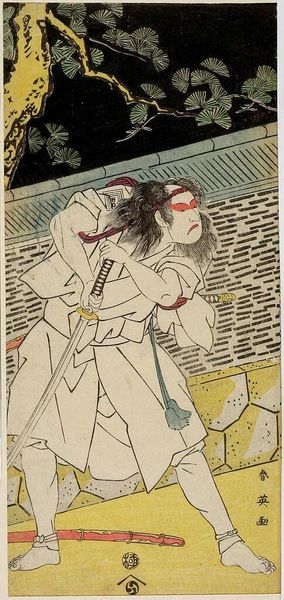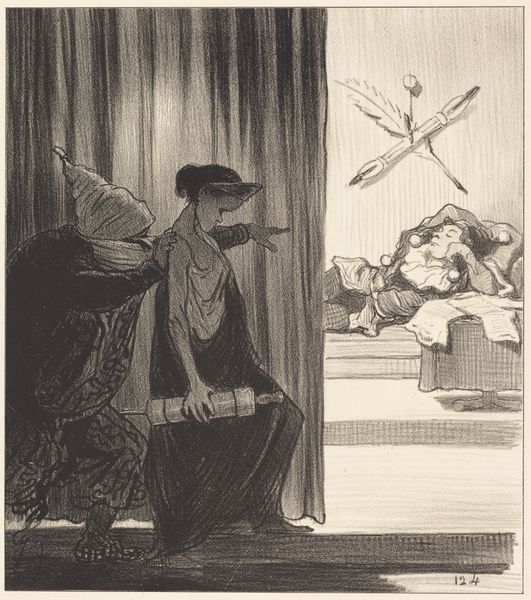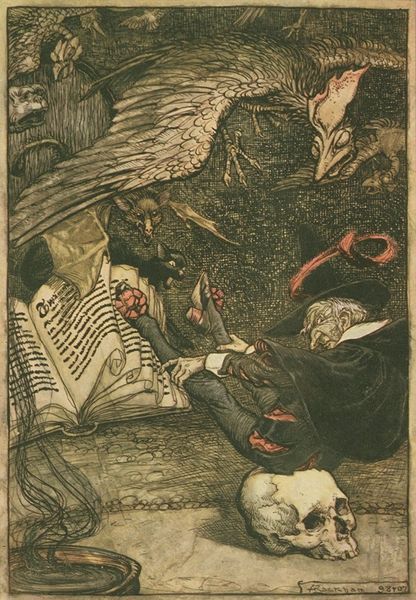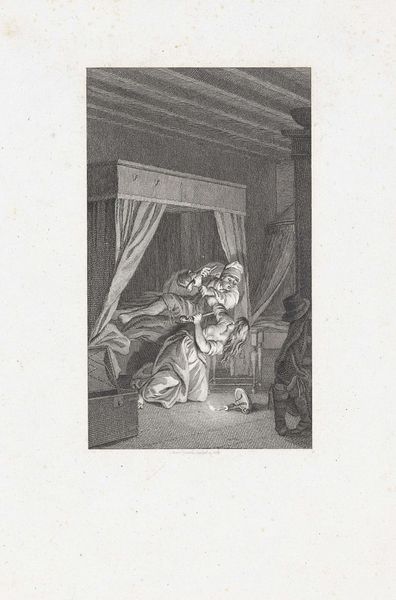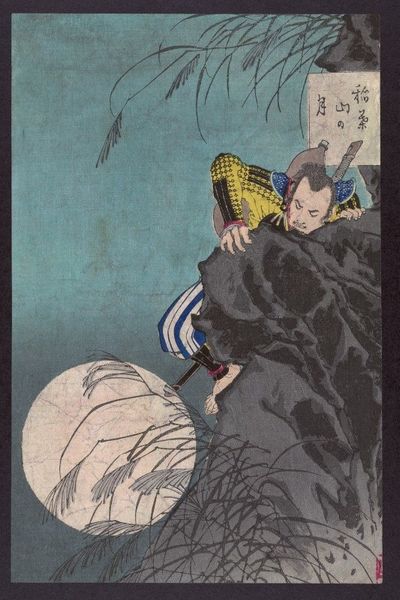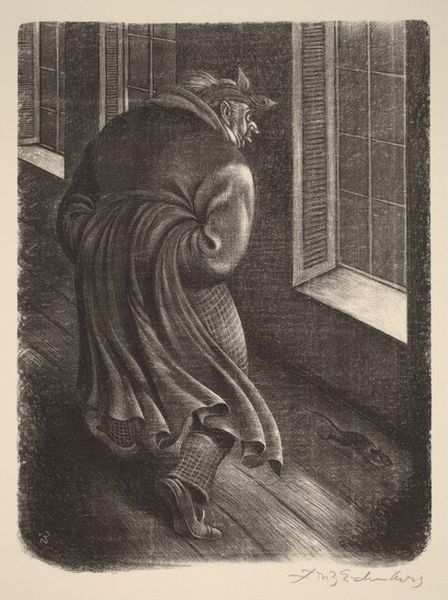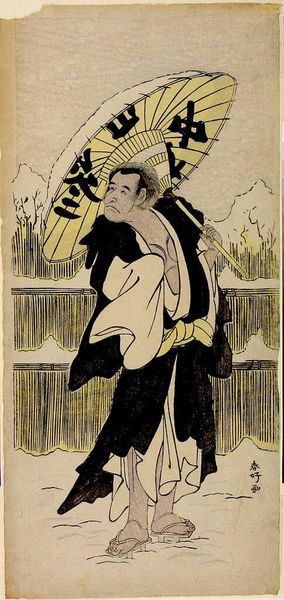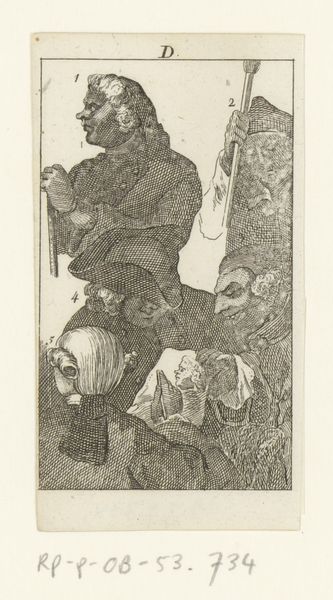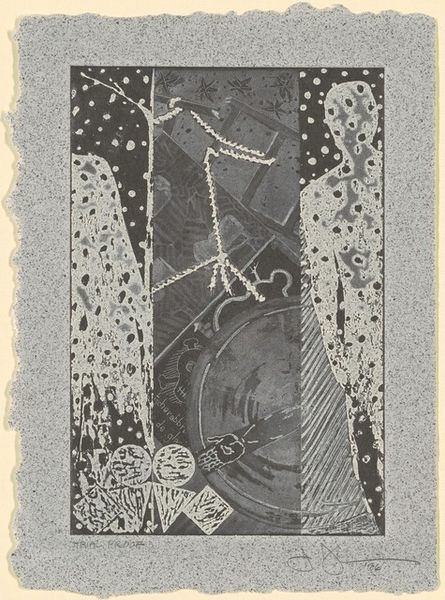
Copyright: Public Domain: Artvee
Curator: Well, what a curious scene we have here. This woodblock print, "Bunbuku chagama," dates back to around 1880 and is the work of Tsukioka Yoshitoshi. Editor: Immediately, I'm struck by this feeling of melancholy and quietude. The slumped figure, that earthy palette...it gives the impression of someone utterly weary, resigned almost. Curator: Indeed. It is certainly more poignant than your average animal depiction. It presents the titular Bunbuku chagama, the badger-turned-tea-kettle, who in Japanese folklore embodies transformative spirits. But it offers quite a humanized rendition, wouldn't you agree? Editor: Absolutely. Look at those eyes—heavy, almost pleading. The whole image feels steeped in cultural symbolism. Badgers, or tanuki, often signify illusion and disguise in Japanese folklore. Perhaps the artist uses this image to represent hidden emotion or vulnerability? Curator: I wonder how viewers would have reacted in late 19th-century Japan. Consider that Yoshitoshi produced this at a time when traditional Japanese arts were being influenced and threatened by Western artistic styles. How did representations of folklore characters serve in that transition and national conversation? Editor: It could act as both a symbol of cultural continuity and resilience during the westernization era and it might even prompt self-reflection through this folklore character’s emotional burden. Curator: The level of technical detail too is particularly impressive. Think about the skill required to translate this complex composition, this shading, all into a woodblock print! The print tradition plays a role in access to visual culture for mass consumption as well. Editor: It highlights how powerful symbols remain over time. The cultural weight they bear across generations informs contemporary understanding and feeling, despite shifts in societal structures. Curator: Yes, understanding that the symbols within visual culture create our emotional language across history is what makes studying pieces such as these continually worthwhile. Editor: I concur. This artwork provides ample space for interpreting our shared emotions—ones that both bind and drive historical awareness.
Comments
No comments
Be the first to comment and join the conversation on the ultimate creative platform.
